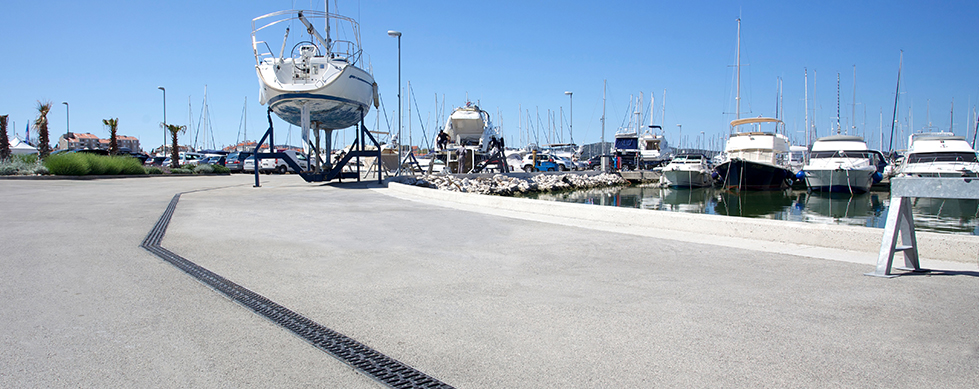
DEMYSTIFYING DRAINAGE
It is crucial that drainage and water management systems are considered at the beginning of a construction project, but with a wide range of options available, selecting the most appropriate solution can be an intimidating task. Here, Adam McKinnon, Business Development Manager, ACO Scotland, explores some of the different types of drainage systems, how to correctly specify, and the role that training plays in selecting water management systems.
Drainage comes in all shapes and sizes, with a number of logistical challenges associated with selecting a system for a project. For example, the complex four-way slopes needed for point drainage can be difficult to construct, and require increased excavation and pipework that could be avoided with an alternative system, such as channel drainage.
This is just one factor of many in selecting drainage, which as we’ll outline below, encompasses a range of considerations.

Load classifications
All drainage system manufacturers must ensure products are suitable to meet a specific load classification. To comply with BS EN 1433:2002 standards, all drainage channels are organised into load classes, which are effectively different categories detailing the load-bearing capacity of that product. Ranging from A 15, for pedestrian footpaths and patios, through to F 900, for airports and industrial yards, the standards are a quick way of ensuring that the right channel and grating is selected.
Grated vs Monocast systems
Grated channels offer greater aesthetic versatility, but monocast systems offer better security and integral strength against turning forces. Local environmental considerations affect the preferred channel type – for example, coastal sea air may require a coated product that protects against oxidisation. ACO’s monocast channels are made from Vienite®, ACO’s high strength recycled polymer concrete, which helps to provide this type of protection.
Correct sizing
Choosing the correct channel size is crucial in preventing flooding, but also unnecessary expenditure in instances of over-specification. It requires knowledge of rain fall levels in a particular location, alongside various considerations over surface area and types. It can be useful to rely on the expertise of drainage manufacturers, and some offer self-service tools to ease this process, such as ACO QuAD.

Training is key
Training is often the best way of keeping up to speed with product developments, which is a crucial element of correct specification. ACO, for example, offers training sessions on products as well as subjects such as SuDS, and where they are best applied within different projects. Thinking about drainage options from the beginning of a project is the best way to ensure that effective surface water management is implemented in urban environments.
To help those under significant time pressures, some manufacturers – including ACO – have already shifted towards online training sessions. Teaming up with learning providers, such as Colab, which offers industry-relevant CPDs and on-demand videos from events, helps to ensure construction professionals can stay up-to-date, even while on-the-go.
Final thoughts
There is no one-size-fits-all with drainage and water management systems, which necessitates a bespoke approach for every project. By engaging in training and opening a dialogue with manufacturers as early as possible, those tasked with delivering drainage can be confident of providing an effective solution.